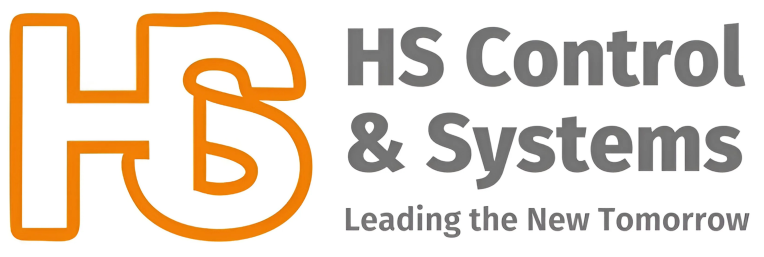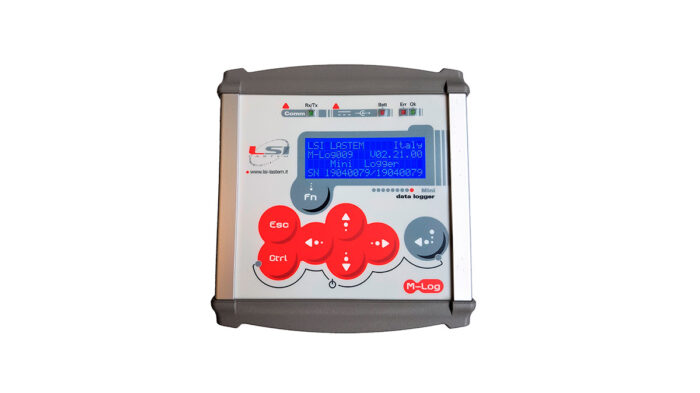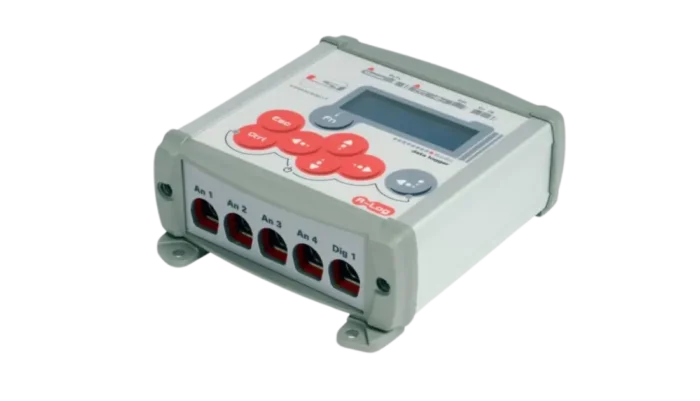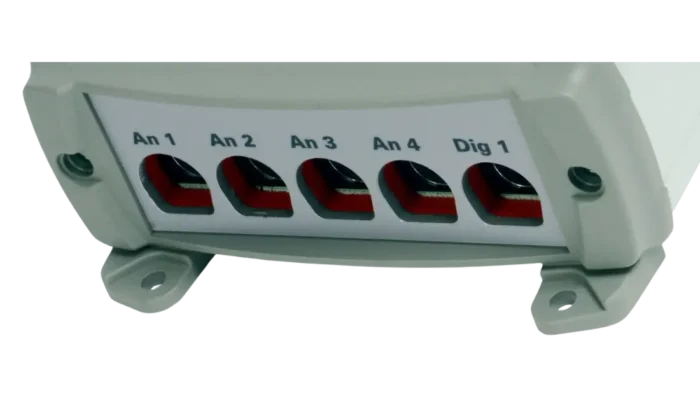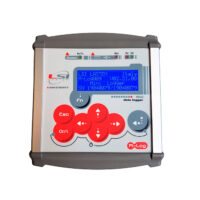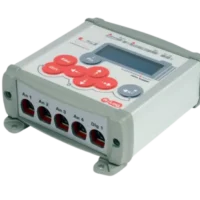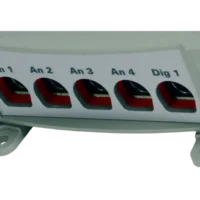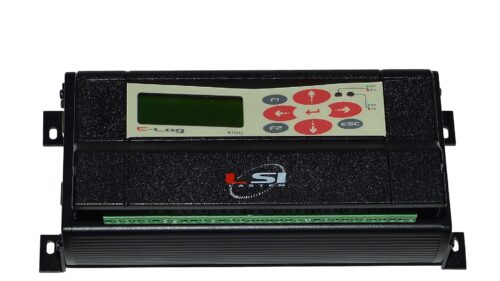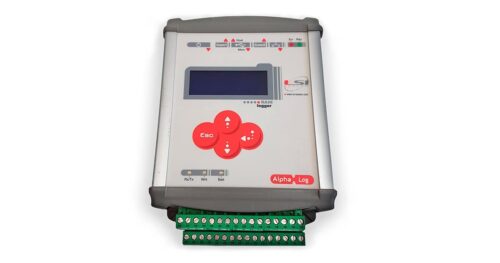Description
M-Log
Highlights
-
Features four analog inputs, one digital input, and one RS232 input;
-
Automatic recognition of connected sensors;
-
Dedicated input for serial sensors;
-
Extremely low power consumption with integrated batteries;
-
Supports up to 50 measurements combining sensor acquisition and derived quantities;
-
Includes an internal library for calculating derived quantities, alongside mathematical and statistical operations;
-
Equipped with 8 MB Flash Memory;
-
Supports Modbus-RTU Master/Slave and TTY protocols;
-
Provides two RS232 ports;
-
Sensor acquisition rate configurable from 1 second to 12 hours;
-
Statistical elaboration rate adjustable from 1 second to 12 hours;
-
PC connectivity via RS232 (USB/Ethernet with external accessories);
-
Features a built-in display and keyboard;
-
Model code: ELO009.
Other Highlights
Inputs for serial sensors
The M-Log COM-2 port offers connectivity for hot wire anemometers or sensors utilizing the Modbus-RTU protocol.
Sensors acquisition rate
The acquisition rate is individually programmable for each input, ranging from 1 second to 12 hours. M-Log processes data from 4 analog input channels and 8 derived quantities every second. To mitigate energy consumption from sensors that require power supply, an advanced power supply setting can be configured from the acquisition event (warm-up), which then deactivates immediately after the acquisition completes.
Data elaboration
Raw measured values can be stored directly as instantaneous readings, or as statistical processes (1 base, from 1 second to 12 hours), including:
-
Average, minimum, maximum, standard deviation;
-
Wind elaborations;
-
Totals.
Derived and calculated quantities
An internal library of formulas for various environmental quantities is provided. These calculations leverage acquired quantities, user-defined constant values, and other previously calculated quantities. The library also incorporates mathematical functions. M-Log supports up to 50 channels, encompassing acquired, derived, and calculated quantities.
Data memory
The internal 8MB memory typically holds data for several weeks. The registration structure operates in a circular fashion. For the ELO009 model with MiniDIN inputs, data is organized into “surveys” with sequential numbering, along with start/end date and time.
Data communication
Data transfer to a PC is possible via RS232, USB (with included adapter), or over Ethernet using an external converter. M-Log employs a proprietary binary protocol for data transmission with LSI LASTEM communication programs: 3DOM and CommNET.
Measurements
M-Log units can be connected to a broad spectrum of sensors for various environmental parameters, such as:
-
Air Temperature and Relative Humidity;
-
Black globe Temperature;
-
Wet Temperature;
-
Surface and materials Temperatures;
-
Air Speed;
-
Light;
-
Pollution (IAQ);
-
Thermal Flow and Radiant Asymmetry. LSI LASTEM offers a wide array of compatible sensors; please consult the LSI LASTEM catalogs for more details.
Derived Quantities
Our data loggers are equipped with an internal library of formulas for computing a range of environmental quantities. These quantities are derived from measured parameters, values entered by the operator, and other calculated quantities.
-
Absolute Humidity (VDI3786 Part 4);
-
Air Changes (1997 Ashrae Fundamentals Handbook);
-
Air Flow (1997 Ashrae Fundamentals Handbook);
-
Air Speed (using Pitot and Darcy Tubes);
-
Absolute Pressure (sea level);
-
Dew Point (ISO7726);
-
Heat Index;
-
Evaporation;
-
Mean Radiant Temperature (ISO7726);
-
Radiant Temperature Asymmetry (ISO7726);
-
Operative Temperature (ISO7726);
-
Plane Radiant Temperature 1&2 (ISO7726);
-
Partial vapor Pressure;
-
Psychrometric Humidity (ISO7726);
-
Specific Humidity (VDI3786 Part 4);
-
Sunshine Duration;
-
TCH – Chill Temperature (ISO TR11079);
-
Wet Bulb Temperature (ISO7726);
-
UV Exposition;
-
UV Index;
-
Wind Chill Index (ISO TR11079) – ELO008, ELO009;
-
WBGT Index IN+OUT Formulas (ISO7243) – ELO008, ELO009;
-
% dissatisfied by Floor Temperature (ISO7730) – ELO009;
-
% dissatisfied by Vertical Temperature (ISO7730) – ELO009;
-
% dissatisfied by Radiant Asymmetry (ISO7730) – ELO009;
-
% dissatisfied by Air Draw (ISO7730) – ELO009;
-
Daylight Factor (IESNA Lighting Handbook) – ELO009;
-
Light Intensity (IESNA Lighting Handbook) – ELO009;
-
Estimated Natural Decay of SARS-CoV-2 on Surfaces – ELO008, ELO009;
